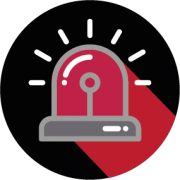(Updated 5/7/20)
5/7 Update: The EIDL program loans are now limited to $150,000 as the demand is dramatically outpacing funding. The SBA is processing previously received applications in the order received. new applications are only accepted for certain US agricultural businesses, per the 5/5/20 update. See news reports from CNBC.com and the Washington Post.
5/5 Update: The Small Business Administration has opened the Economic Injury Disaster Loan program, including emergency advances of up to $10,000 to U.S agricultural businesses. For more information on eligibility and the application process, click here.
 Late this week, Congress passed and the President signed a $480 billion package of additional COVID-19 relief funding. Of this, $310 Billion is for Payroll Protection Program (PPP) loans and an additional $60 Billion is earmarked for the Economic Injury Disaster Loan (EIDL) program.
Late this week, Congress passed and the President signed a $480 billion package of additional COVID-19 relief funding. Of this, $310 Billion is for Payroll Protection Program (PPP) loans and an additional $60 Billion is earmarked for the Economic Injury Disaster Loan (EIDL) program.
If want to apply for a PPP loan, the time to act is now.
The SBA Payroll Protection Program (PPP) re-opens with a new round of funding at 10:30 AM ET on Monday April 27th. The program provides an additional $310 Billion in funds, $60 Billion of which are earmarked through smaller credit unions and banks, and to minority, women, and veteran-owned businesses. If you do not have a SBA lender, now is the time to check with local banks and credit unions.
If you submitted a PPP loan package before and did not get a confirmation number, there is conflicting information about whether or not you have to re-apply. We strongly suggest that you contact your bank or lender to confirm that they plan to process your existing application. If you cannot confirm, you should prepare a new application package with the payroll and financial reports updated to the new “last 12 months.”
If you did not previously submit a PPP loan application, we suggest you prepare the application and materials now, so that you can provide them to your lending bank first thing Monday morning. While banks may differ in their specific requests, you package will most likely include the following:
- SBA PPP Borrower Application Form
- Payroll report for last 12 months, including:
- All W-2 pay information, less required exclusions
- State & Local Taxes Based on Compensation
- Employer healthcare costs
- Employer contributions to retirement plans
- 2019 Form 940
- Form 941 for last 12 months (last four reported quarters)
- Certification of Beneficial Ownership
- Ownership Report (names, titles, ownership percentages)
- Copy of legal ID — Drivers License or Passport — for any owner over 20%
- Retirement plan declaration (that you have/do not have a company retirement plan)
Most payroll companies have created reports specifically designed to provide the necessary information.
Am You Eligible?
You are eligible if you are:
- A small business with fewer than 500 employees
- A small business that otherwise meets the SSA’s size standard
- A 501(c)(3) with fewer than 500 employees
- An Individual who operates as a sole proprietor
- An Individual who operates as an Independent contractor
- An Individual who is self-employed who regularly carries on any trade or business
- A Tribal business concern that meets the SBA size standard
- A 501(c)(19) Veterans Organizati0n that meets the SBA size standard
In addition, some special rules may make you eligible:
- If you are in the accommodation and food services sector (NAICS 72), the 500-employee rule is applied on a per physical location basis
- If you are operating as a franchise or receive financial assistance from an approved Small Business Investment Company the normal affiliation rules do not apply
What Will Lenders Want to See?
In evaluating eligibility, lenders are directed to consider whether the borrower was in operation before February 16. 2020 and had employees for whom they paid salaries and payroll taxes or paid independent contractors.
Lenders will ask you for a good faith certification that:
- The uncertainty of current economic conditions makes the loan request necessary to support ongoing operations
- The borrower will use the loan proceeds to retain workers and maintain payroll or make mortgage, lease, and utility payments
- Borrower does not have an application pending for a loan that duplicates the purpose and amounts applied for here
- From Feb. 15, 2020 to Dec. 31, 2020, the borrower has not received a loan that duplicates the purpose and amounts applied for here (Note: You may be able to fold emergency loans received since Jan. 31, 2020 into this loan)
If you are an independent contractor, sole proprietor, or self-employed individual, lenders will also be looking for certain documents, such as payroll tax filings, Forms 1099-MISC, and income and expenses from the sole proprietorship.
Please also note that lenders will NOT look for:
- That you sought and were unable to obtain credit elsewhere
- A personal guarantee (not required for the loan)
- Collateral (not required for the loan)
How Much Can You Borrow?
Loans can be up to 2.5 times your average monthly payroll costs, not to exceed $10 million. You Payroll Cost is the sum of included payroll costs less excluded payroll costs, as follows.
Included Payroll Costs for Employers: the sum of payments of any compensation with respect to employees that is a:
- Salary, wage, commission, or similar compensation
- Payment of a cash tip or equivalent
- Payment for vacation, sick, or family medial leave
- Allowance for dismissal or separation
- Payment required for the provisions of group health care benefits, including insurance premiums
- Payment of retirement benefits
- Payment of state or local tax assess on the compensation of the employee
For Sole Proprietors, Independent Contractors, and Self-Employed Individuals: the sum of payments of any compensation to, or income, that is a wage, commission, income, net earnings from self-employment, or similar compensation, and that is an amount that is not more than $100,000 in one year, as pro-rated for the covered period.
Excluded Payroll Costs:
- Compensation of an individual employee in excess of an annual salary of $100,000, prorated for the period of Feb. 15 to June 30, 2020
- Payroll taxes, railroad retirement taxes, and income taxes
- Any compensation of an employee whose principal place of residence is outside the United States
- Qualified sick leave wages for which a credit is allowed under Section 7001 of the Families First Coronavirus Response Act
Note that special rules apply for businesses not in operation for all of 2019 and for calculating average wages for seasonal employees.
Will This Loan be Forgiven?
Borrowers are eligible for loan forgiveness equal to the amount the borrower spent on the following items during the 8-week period beginning on the date of the origination of the loan.
- Payroll costs (see above for criteria)
- Interest on the mortgage obligation incurred in the ordinary course of business
- Rent on a leasing agreement
- Payments on utilities (electricity, gas, water, transportation, telephone, or internet)
- Additional wages paid to tipped employees
The amount of the loan forgiveness will be reduces if there is a reduction in the number of employees or a reduction of greater than 25% in wages paid to employees. Staffing and wage reductions occurring in the period starting Feb. 15, 2020 and ending 30 days after the enactment of the CARES Act shall not reduce the amount of loan forgiveness IF the staffing or wage reductions are eliminated by June 30, 2020.
![]() Almost all of our businesses are feeling the impact of COVID-19. Revenues and cash flows are down and some costs are rising. We are all looking for ways to cut expenses. Information technology and services can be a good place to find savings.
Almost all of our businesses are feeling the impact of COVID-19. Revenues and cash flows are down and some costs are rising. We are all looking for ways to cut expenses. Information technology and services can be a good place to find savings.
 It should be no surprise to you that we are seeing a surge in phishing and other cyber attacks, as criminals look to take advantage of the COVID-19 crisis. A sample of recent news reports illustrates the scope of the problem.
It should be no surprise to you that we are seeing a surge in phishing and other cyber attacks, as criminals look to take advantage of the COVID-19 crisis. A sample of recent news reports illustrates the scope of the problem.